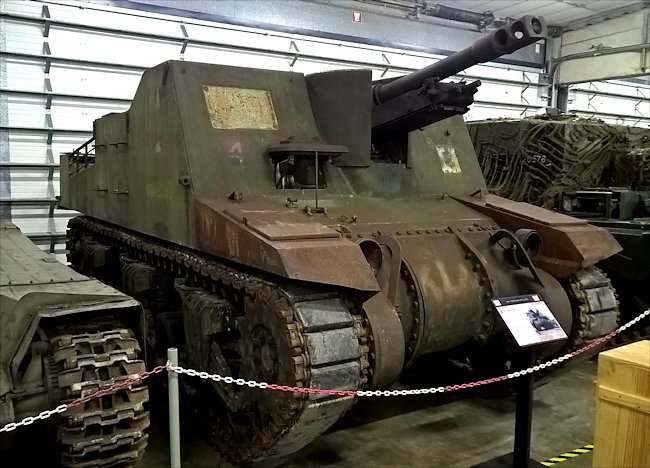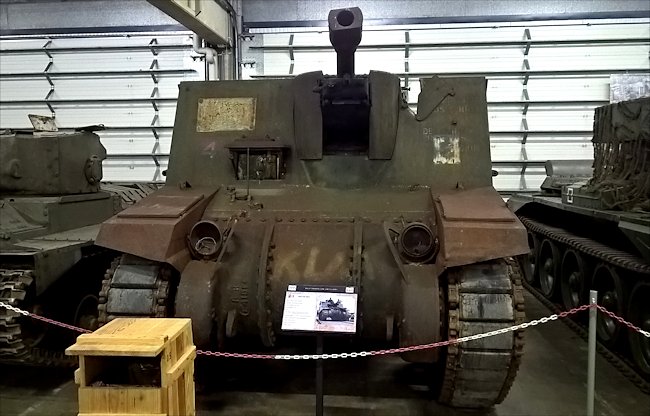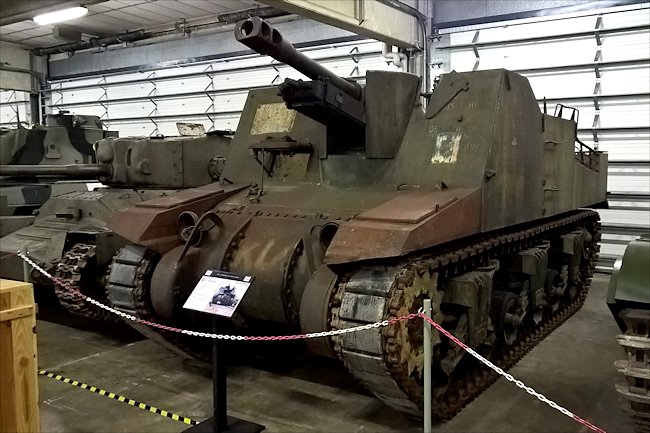Sexton Self-propelled Artillery Gun
Sexton Self-propelled Artillery Guns saw action in the WW2 Battle of the Bulge providing artillery support for British tanks. This surviving Sexton SPG is kept at the Bastogne Barracks in Belgium.

This preserved Sexton Self-propelled Artillery Gun is exhibited at the Bastogne Barracks in Belgium.
Location
The Bastogne Barracks can be found at 40 Rue de la Roche (N834) in Bastogne just north west of the city centre. They open at 10am and close at 4pm. You really need to get there by 2pm as there is a lot to see. It is an operational military camp with a tank restoration centre attached. You have to wait to go on a guided tour. You cannot wander around on your own. The only day it is closed is Monday. Many of the tanks have been restored to running condition. Have a look at their Facebook page for information about new events.

This preserved Sexton Self-propelled Artillery Gun is exhibited at the Bastogne Barracks in Belgium.
Specifications
It was powered by a petrol Continental R-975 9 cylinder radial engine that produced 400 hp. The Sexton had a top road speed of 25 mph (40 km/h). It was not designed to fight tanks in close combat. Its armour thickness ranged from 15 mm to 32mm which was just strong enough to protect the crew from small arms fire and hot jagged shrapnel from exploding artillery and mortar shells. many of the Sextons were fitted with wading screens to prevent them being flooded by large waves as they waded ashore. These screens were taken off once they had got off the beach.
It needed a gun crew of 6; Commander, driver, gunner, gun-layer, loader, radio operator. The main gun was a British Ordnance QF 25 pounder Mk II. Around 105 high explosive HE shells could be stored onboard. These weighed 25 lbs each (11kg). This is how the gun got its name. A few of the shells would be armour piercing AP rounds for self defence just incase a German panzer surprised their location and smoke shells. It was capable of firing indirectly at targets 7.61 miles (12.25 km) away. The crew had access to two 0.303 (7.70mm) light Bren machine guns

This preserved Sexton Self-propelled Artillery Gun is exhibited at the Bastogne Barracks in Belgium.
Read more in these two tank books

